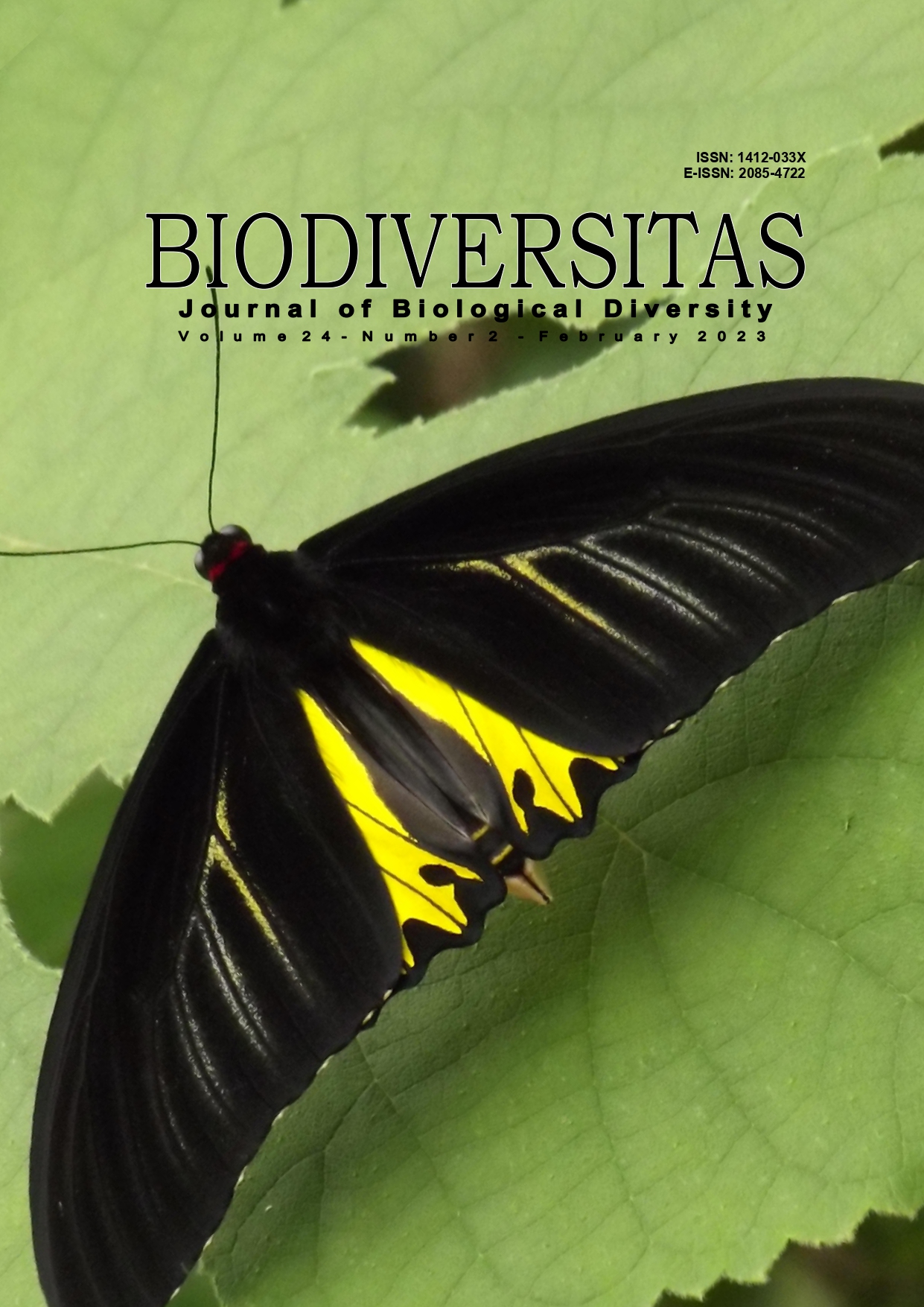Comparative study on Pb absorption ability of five shade plant species in industrial estate and urban forests of Bekasi, Indonesia
##plugins.themes.bootstrap3.article.main##
Abstract
Abstract. Intan DZ, Yuniati R, Lestari R. 2023. Comparative study on Pb absorption ability of five shade plant species in industrial estate and urban forests of Bekasi, Indonesia. Biodiversitas 24: 1289-1294. The expansion of the transportation and industrial sectors is detrimental to the environment. Lead is one of the most typical contaminants they produce (Pb). As biological agents, shade plants lower the air's Pb contamination. This study observed leaf Pb absorption from five species of shade plants such as Terminalia catappa L. (Sea almond tree); Swietenia macrophylla King. (mahogany); Samanea saman (Jacq.) Merr. (raintree); Mangifera indica L. (mango); and Nephelium lappaceum L. (rambutan). This research was conducted at two different sites: Patriot urban forest (Bekasi City) and MM2100 Industrial Estate (West Cikarang Subdistrict, Bekasi District) of West Java Province, Indonesia. The objectives of this study were to analyze the ability of five plant species to absorb Pb and the correlation between Pb absorption with peroxidase enzyme activity and chlorophyll content. The Pb absorption was analyzed by Atomic Absorption Spectroscopy (AAS), while the peroxidase enzyme activity and chlorophyll content were analyzed using a spectrophotometer. The results showed that Pb absorption by plant species in research sites was not significantly different (sig.>0.05), meaning that different shade plant species and research sites did not significantly affect Pb absorption. Sea almond tree had the highest average Pb absorption (7.24 µg/g), followed by mahogany (5.44 µg/g), mango (3.4 µg/g), raintree (3.17 µg/g) and rambutan (2.33 µg/g). The correlation and regression analysis showed that Pb absorption had no significant effect on chlorophyll content (0.173>0.05), and the direction of its correlation was negative (-0.317). It means that the chlorophyll content does not affect lead uptake. The correlation and regression analysis showed that Pb absorption significantly affected peroxidase enzyme activity (0.028<0.05), and the direction of its correlation was positive (0.490). It means that Pb absorption did not significantly affect chlorophyll content but significantly affected peroxidase enzyme activity.

